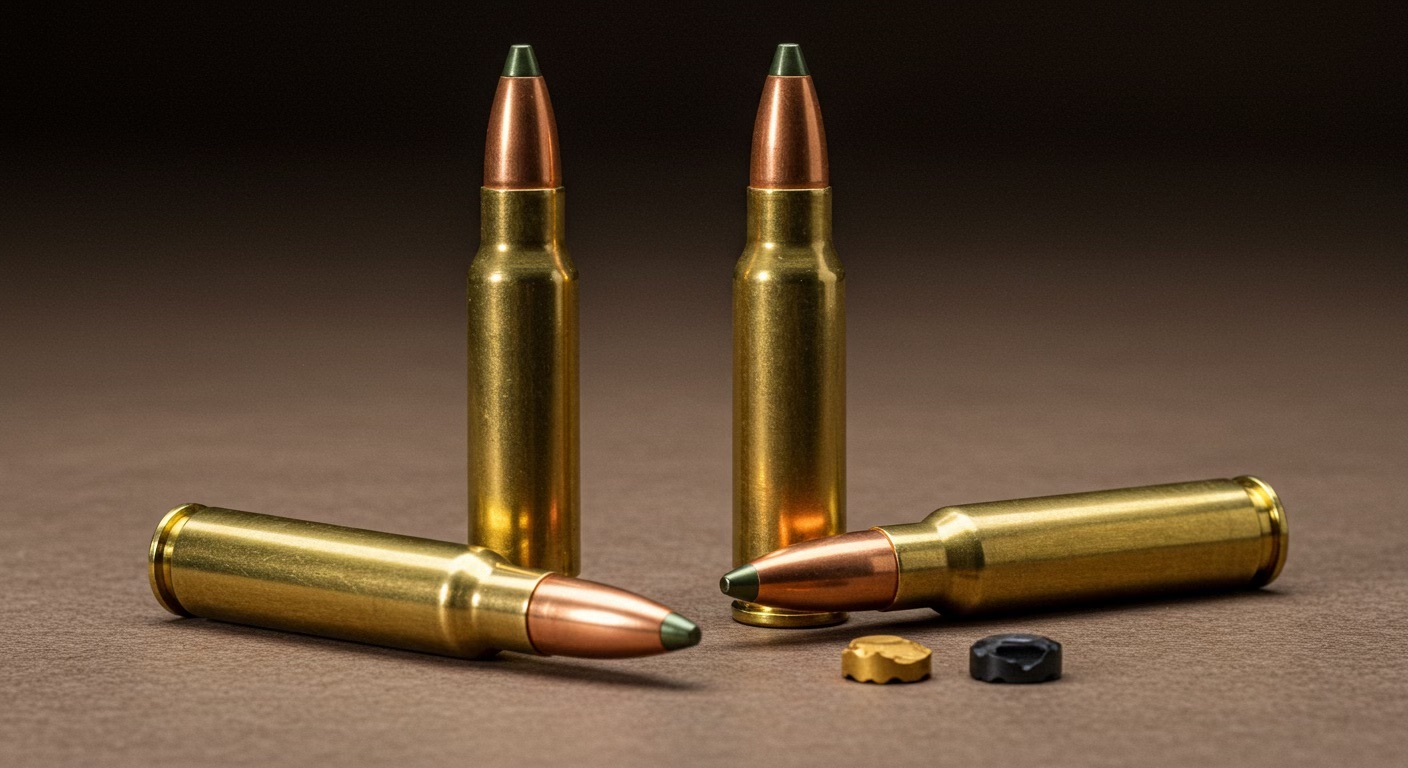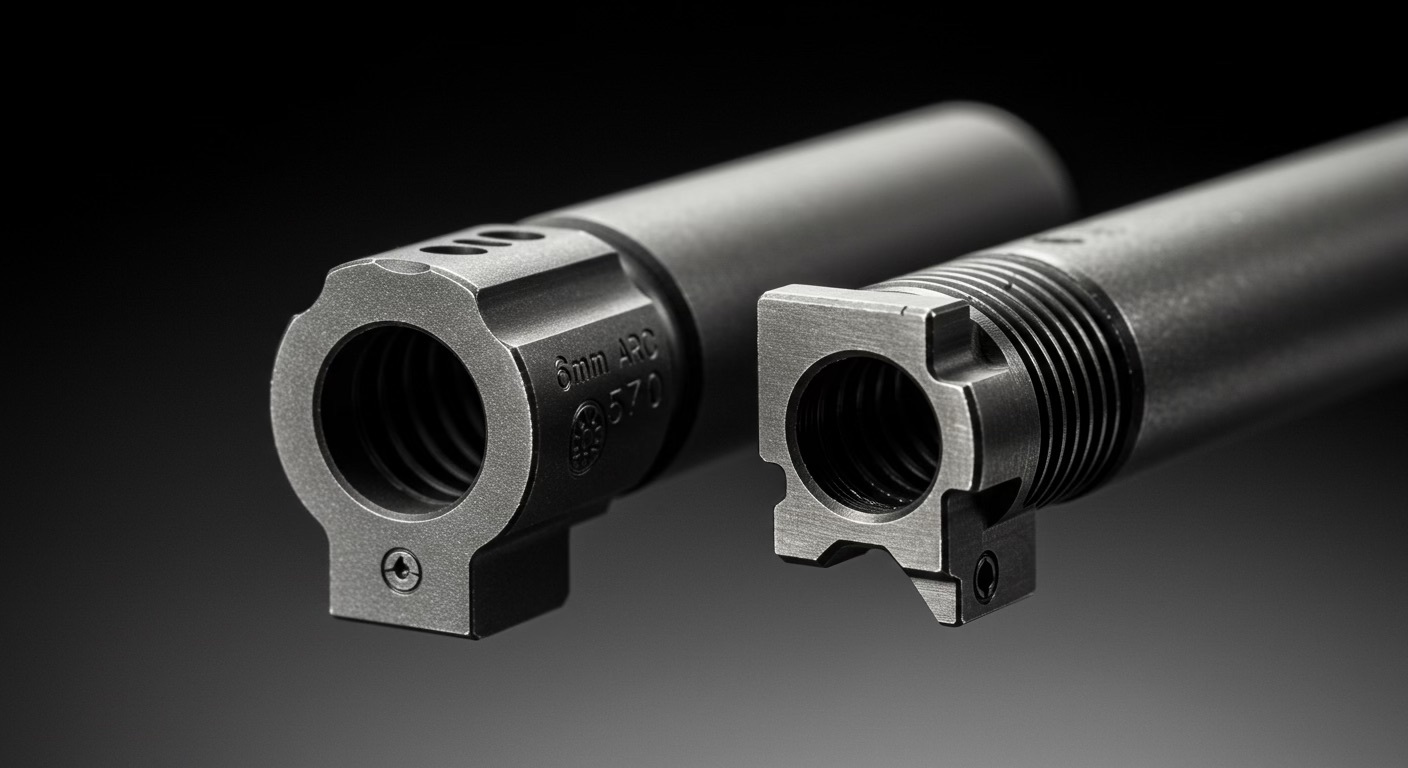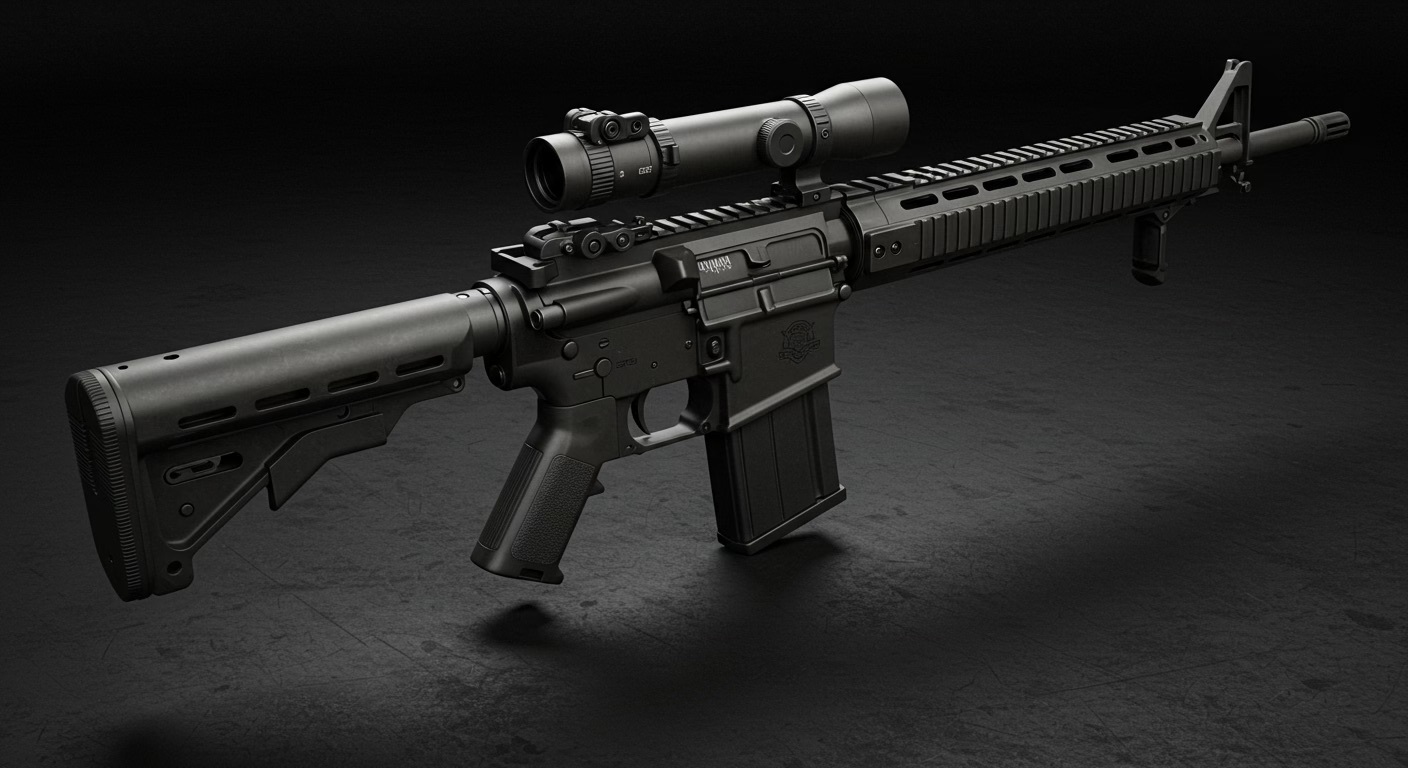Choosing the right caliber for your rifle is a critical decision that affects everything from shooting performance to practical applications. When comparing the 6mm ARC (Advanced Rifle Cartridge) and the 5.56 NATO, shooters face a choice between established reliability and innovative ballistic advantages.
This caliber comparison has become increasingly relevant as more rifle enthusiasts seek optimal performance at extended ranges while maintaining manageable recoil. Understanding the distinct characteristics of each round, from ballistic coefficients to terminal effects, can help you make an informed decision based on your specific shooting needs.
At AR15 Parts, we've helped countless shooters navigate these important decisions, providing both the knowledge and components needed to optimize their rifle platforms for either caliber.
How 5.56 and 6mm ARC Were Designed for Very Different Missions
The 5.56x45mm NATO round has dominated the military and civilian markets since its adoption by the U.S. military in the 1960s. Developed as a high-velocity, lightweight cartridge, the 5.56 was designed to allow soldiers to carry more ammunition while maintaining effective performance at combat distances.
Its widespread adoption led to mass production, affordability, and nearly universal compatibility with AR-platform rifles. The 6mm ARC is a much more recent development, introduced by Hornady in 2020 specifically to address some of the 5.56's limitations.
Designed to fit in AR-15 platforms with minimal modifications, the 6mm ARC was engineered to deliver enhanced long-range performance while maintaining manageable recoil. It bridges the gap between the 5.56 NATO and larger calibers like .308 Winchester, offering improved ballistics without requiring a larger receiver.
This newer cartridge has quickly gained traction among precision shooters and hunters who need extended effective range without moving to a heavier AR-10 platform. The 6mm ARC represents the evolution of AR-platform cartridges, building upon decades of experience with previous calibers to create something optimized for modern shooting demands.
Comparing Ballistics: Velocity, Wind Drift, and Energy Retention

When examining ballistic performance, the differences between these calibers become immediately apparent. The 6mm ARC fires heavier bullets at respectable velocities, resulting in significantly better external ballistics compared to the 5.56mm.
The 6mm ARC typically pushes 103-108 grain bullets at approximately 2,750-2,800 fps from an 18-inch barrel. These heavier projectiles maintain higher ballistic coefficients, resulting in better wind resistance and energy retention at distance.
Using quality components like the 18" 6MM ARC Barrel from Ballistic Advantage provides the optimal twist rate and barrel profile to maximize the cartridge's potential. By comparison, the 5.56mm typically fires 55-77 grain bullets at approximately 2,700-3,100 fps. While the 5.56 often achieves higher muzzle velocities, its lighter bullets shed velocity more quickly and are more susceptible to wind deflection.
The practical results of these differences become most apparent at ranges beyond 300 yards:
- Energy Retention: At 500 yards, the 6mm ARC typically retains approximately 60-65% of its muzzle energy compared to 40-45% for the 5.56.
- Wind Drift: The 6mm ARC experiences roughly 30-40% less wind deflection at 500 yards.
- Trajectory: A flatter trajectory with the 6mm ARC translates to simplified holdovers at extended distances.
These ballistic advantages make the 6mm ARC particularly appealing for applications requiring precision at extended ranges, while the 5.56 remains highly effective at typical defensive and recreational shooting distances.
Which Caliber Fits Your Real-World Shooting Needs Best?
Understanding where each caliber excels helps determine which better suits your specific needs. The 5.56 NATO and 6mm ARC each have distinct advantages depending on the intended application.
The 5.56 NATO remains the premier choice for:
- Home defense and tactical applications, where lighter recoil enables faster follow-up shots
- High-volume recreational shooting, where ammunition cost and availability are primary concerns
- Training new shooters due to its manageable recoil profile
- Compatibility with the widest range of AR-15 components and accessories
Meanwhile, the 6mm ARC shows its true potential in:
- Long-range precision shooting out to 1,000 yards
- Hunting medium-sized game where additional energy and terminal performance are beneficial
- Competition shooting where wind-bucking capabilities provide an edge
- Applications requiring AR-15 size/weight but enhanced downrange performance
Many shooters report that building a dedicated 6mm ARC upper to complement their existing 5.56 lower provides versatility without requiring an entirely new platform. The 18" 6MM ARC Complete Upper from Satern represents an excellent turnkey solution for shooters looking to expand their capabilities without extensive gunsmithing.
Your primary shooting discipline and distance requirements should ultimately guide which caliber best suits your needs. For shooters regularly engaging targets beyond 400 yards, the 6mm ARC offers meaningful advantages, while those focusing on closer ranges may find the 5.56's characteristics more than adequate.
Which Caliber Saves You More Over Time? Ammo Cost and Access
Ammunition availability and cost represent significant practical considerations when selecting a caliber. As an established military and civilian standard, 5.56 NATO enjoys widespread production and distribution advantages.
The typical cost breakdown as of 2025:
- 5.56 NATO Practice Ammunition: $0.40-0.60 per round
- 5.56 NATO Premium Ammunition: $1.00-1.50 per round
- 6mm ARC Practice Ammunition: $1.00-1.50 per round
- 6mm ARC Premium Ammunition: $1.75-2.50 per round
Beyond cost, availability must be considered. The 5.56 NATO can be found at virtually every gun store and sporting goods retailer in America. The 6mm ARC, while growing in popularity, remains primarily available through specialty retailers and online sources. During ammunition shortages, established calibers like 5.56 typically return to market availability more quickly than specialized cartridges.
For high-volume shooters, this cost differential can significantly impact training frequency and overall proficiency. However, for those who shoot less frequently but desire optimal performance, the per-round cost becomes less important than the ballistic advantages.
Another consideration is reloading potential. The 6mm ARC uses relatively common components (6mm bullets and .308 Winchester-derived brass) that are accessible to reloaders. This can significantly reduce the cost differential for those willing to load their ammunition, potentially bringing per-round costs down to $0.70-0.90 for quality handloads.
What You Need to Know About Setup and Compatibility for Each Caliber

Implementing either caliber in your AR-platform rifle requires understanding the specific hardware requirements and potential modifications needed.
For 5.56 NATO:
- Industry-standard 1:7 to 1:9 twist barrels
- Common 1/2x28 muzzle thread pattern
- Standard AR-15 bolt and bolt carrier group
- Universal magazine compatibility with standard AR magazines
For 6mm ARC:
- Requires a specific 6mm ARC barrel (typically 1:7 or 1:8 twist)
- Usually features a 5/8x24 muzzle thread pattern
- Requires a dedicated 6mm ARC bolt (or a 6.5 Grendel bolt)
- Functions with modified 6.5 Grendel magazines
The most significant hardware difference lies in the barrel and bolt. Converting an existing AR-15 to 6mm ARC typically requires replacing these components, while everything else remains standard. Shooters can use their existing lower receiver, trigger group, buffer system, and other components.
Weight differences between the platforms are minimal. A completed 6mm ARC rifle typically weighs approximately the same as a comparable 5.56 rifle, with any weight variation primarily determined by barrel profile rather than caliber choice.
For shooters interested in maximum versatility, building or purchasing a dedicated 6mm ARC upper assembly to pair with an existing lower receiver presents the most efficient approach. This configuration allows quick switching between calibers while leveraging existing components.
How These Rounds Perform on Impact and at Distance
The terminal performance of each caliber, how they perform when striking a target, reveals significant differences that directly impact their effectiveness for various applications.
The 5.56 NATO, particularly with 55-62 grain bullets, relies heavily on velocity for terminal effect. It typically produces dramatic tissue disruption through fragmentation and temporary wound cavitation when impacting at velocities above approximately 2,500 fps.
However, as distances increase and velocity decreases, this effect diminishes considerably. Most military and self-defense loads in 5.56 show optimal performance inside 200-300 yards before terminal effectiveness begins to degrade.
The 6mm ARC, with its heavier bullets, maintains effective terminal performance at significantly greater distances. The typical 105-108 grain 6mm bullets deliver controlled expansion and deeper penetration even at reduced velocities. This translates to consistent terminal performance out to 600+ yards, maintaining hunting-suitable energy and expansion characteristics well beyond the 5.56's effective range.
For defensive applications inside 300 yards, the 5.56 performs admirably. For hunting or precision applications beyond that distance, the 6mm ARC demonstrates clear advantages in terminal performance, energy delivery, and consistent bullet behavior.
This performance difference explains why many hunters have enthusiastically adopted the 6mm ARC for medium game. Its ability to deliver reliable expansion and adequate penetration at extended distances makes it suitable for antelope, deer, and similar-sized game out to ranges where the 5.56 would be considered inadequate or ethically questionable.
Which Round Is Easier to Shoot Accurately Based on Your Skill Level?
While ballistic tables and energy calculations provide theoretical comparisons, practical shooting considerations often prove more relevant for most shooters. Both calibers can deliver excellent accuracy, but shooter experience differs significantly between them.
The 5.56 NATO offers:
- Minimal recoil allowing rapid follow-up shots
- Less sensitivity to wind at typical engagement distances (≤300 yards)
- Easier spotting of impacts due to a flatter trajectory at common ranges
- Greater practical accuracy for average shooters due to reduced recoil anticipation
The 6mm ARC provides:
- Moderate recoil that remains manageable for most shooters
- Significantly better wind resistance at extended ranges
- Superior ballistic performance that simplifies long-range shooting
- Greater practical accuracy potential at distances beyond 400 yards
In practical terms, the average shooter may find it easier to shoot tight groups with the 5.56 at 100-200 yards due to its minimal recoil. However, at 500+ yards, the 6mm ARC's superior ballistics may make it easier to achieve consistent hits despite its slightly increased recoil.
For new shooters or those primarily focusing on defensive applications, the 5.56's mild recoil and flat trajectory at common engagement distances remain compelling advantages. For experienced shooters looking to extend their effective range, the 6mm ARC's ballistic advantages typically outweigh its modest increase in recoil.
Frequently Asked Questions
Will a 6mm ARC upper fit on my standard AR-15 lower receiver?
Yes, the 6mm ARC was specifically designed to function with standard AR-15 lower receivers. You can simply attach a complete 6mm ARC upper to your existing mil-spec lower receiver, and it will function properly.
The only component specific to the 6mm ARC that you'll need beyond the upper assembly is appropriate magazines, as standard 5.56 magazines won't reliably feed the 6mm ARC cartridges. Modified 6.5 Grendel magazines work perfectly with the 6mm ARC.
What is the effective range difference between 5.56 and 6mm ARC?
The 5.56 NATO typically maintains effective terminal performance out to approximately 300-400 yards before velocity drops below optimal levels for expansion or fragmentation.
The 6mm ARC extends this effective range significantly, maintaining adequate velocity for terminal performance out to 800-1000 yards, depending on the specific load. For precision shooting, the 6mm ARC provides meaningful advantages beyond 300 yards, with these advantages becoming increasingly pronounced as distances extend further.
Is the 6mm ARC hard on barrels compared to 5.56?
The 6mm ARC does have a slightly higher barrel wear rate than the 5.56 NATO, but not dramatically so. While the 5.56 NATO might provide 10,000-15,000 rounds of accurate barrel life under typical conditions, the 6mm ARC typically delivers 6,000-8,000 rounds before accuracy begins to degrade.
This is primarily due to the larger bore diameter, higher operating pressures, and greater bullet weight. However, for most recreational shooters who fire fewer than 1,000 rounds annually, this difference is practically negligible.
Can I use my existing 5.56 AR-15 magazines with 6mm ARC?
No, standard 5.56 magazines will not reliably feed 6mm ARC ammunition. The 6mm ARC cartridge has a different case geometry that requires specific magazines designed for the cartridge.
Most shooters use modified 6.5 Grendel magazines, which function reliably with the 6mm ARC. These magazines are readily available from various manufacturers and typically hold 10, 20, or 25 rounds, depending on the design.
What modifications are needed to convert my 5.56 AR-15 to 6mm ARC?
Converting your AR-15 from 5.56 to 6mm ARC requires changing the barrel, bolt, and magazines. The easiest approach is to purchase a complete upper receiver assembly in 6mm ARC, which includes the appropriate barrel and bolt already installed.
This can simply be attached to your existing lower receiver. You'll also need to acquire appropriate magazines for the 6mm ARC cartridge. All other components, including the lower receiver, buffer system, trigger group, and furniture, remain unchanged.
Making the Right Caliber Choice for Your Shooting Goals

When choosing between the 6mm ARC and 5.56 NATO, your specific shooting requirements should guide your decision. The 5.56 remains an excellent choice for defensive applications, high-volume shooting, and general-purpose use within 300 yards.
Its abundant ammunition supply, lower cost, and minimal recoil continue to make it the default choice for many AR platform users. The 6mm ARC shines for those seeking enhanced long-range performance, improved terminal ballistics, and superior wind resistance without moving to a larger rifle platform.
For many shooters, the ideal solution may be owning both a standard 5.56 rifle for general use and a 6mm ARC upper assembly for long-range applications. Whatever your specific needs, exploring quality components from reputable suppliers ensures you'll get the most from either caliber choice.
Contact AR15 Parts to Get More From Your Build
At AR15 Parts, we help builders and marksmen choose the right components for better performance, whether you’re punching paper or dropping game at distance. Our catalog features quality barrels, bolts, and complete uppers designed for popular calibers like 5.56 NATO and 6mm ARC.
If you’re planning a caliber swap or optimizing for range and precision, reach out to AR15 Parts today. We’ll help you choose the right setup for your goals and get the most from every shot.

